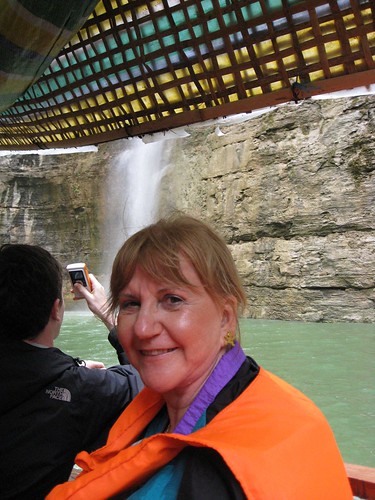We did stop on one long beach and buy souvenirs and whatever you buy on beaches. It wasn’t just markets. All along the road winding up, you would see small temples and graveyards. Also, along the road here and there were the signs that would show the meters to measure water level, all the way up to 175, which was way up the cliff. The beaches were all below the 25 meter mark. It seemed like the villagers didn’t climb to the top; there were maybe a mile between villages. Only the lower part was terraced.
When we came to a big town that was going to be inundated, it looked like a war zone. They were building big apartment buildings up the top and people were demolishing their homes, trying to take as much as they could to the top. I don’t know how much help they were going to get from the government.
I can’t describe the war zone, it was what it was. We were appalled at the disarray people were in, and still living there.
The river was wild, yellow, turbulent water. There were fishing boats all over the place. The river was very narrow, channeled between the gorges.
Now, you go down, and you really don’t see many people on either side. I assume they’re all at the top. Now it’s all green. The little villages are gone. The temples are gone. It seemed like we were going in gorges with forests, not vibrant villages or communities.
The temples were lower, where people could visit them. The temples were gone, the graves were gone, the people were gone. The terraces were gone, except some higher up where the guide said the soldiers had built them.
I was shocked because I was wondering where all the people were, where were all those thriving communities that had been there for hundreds and thousands of years?

No comments:
Post a Comment